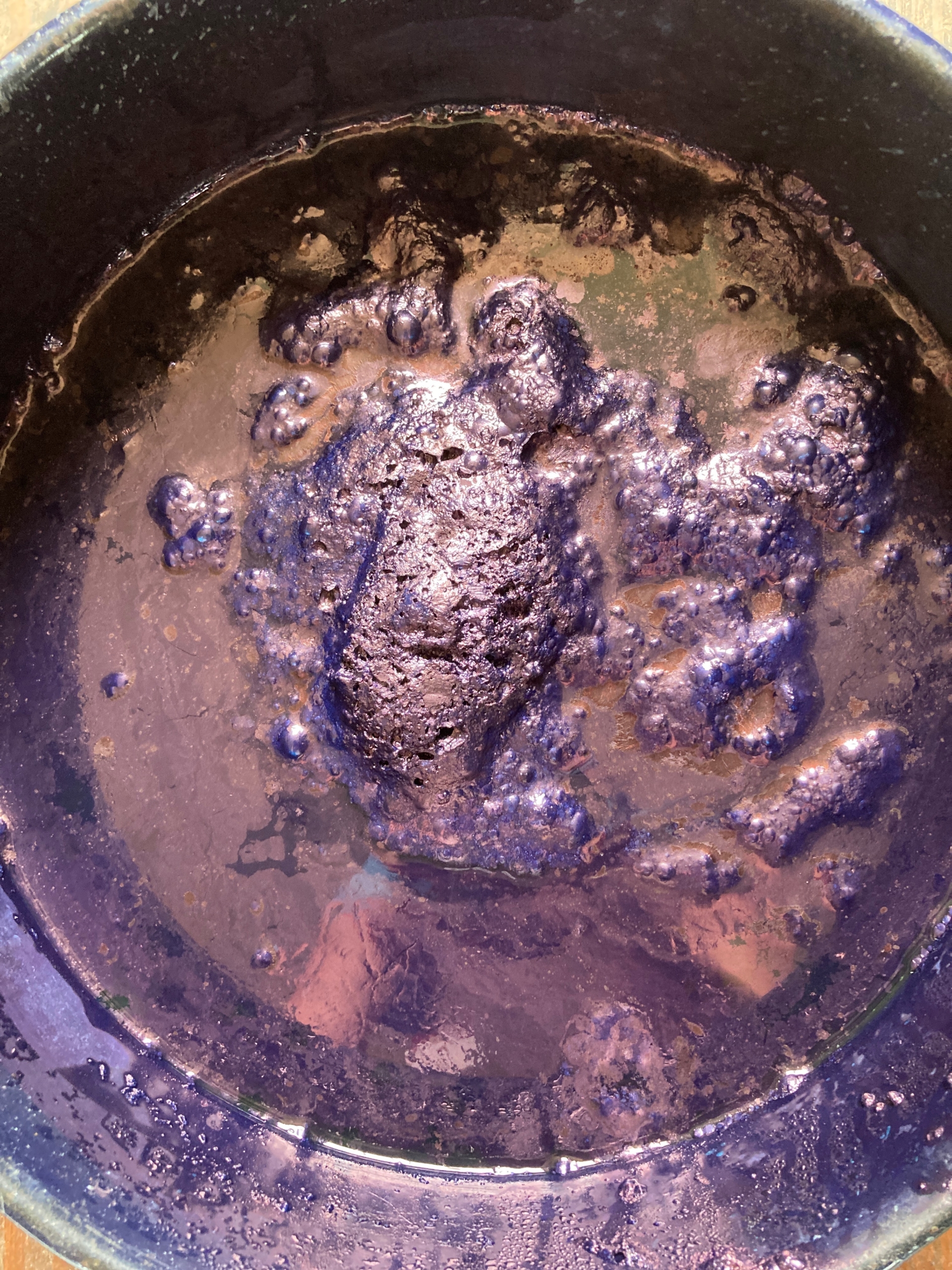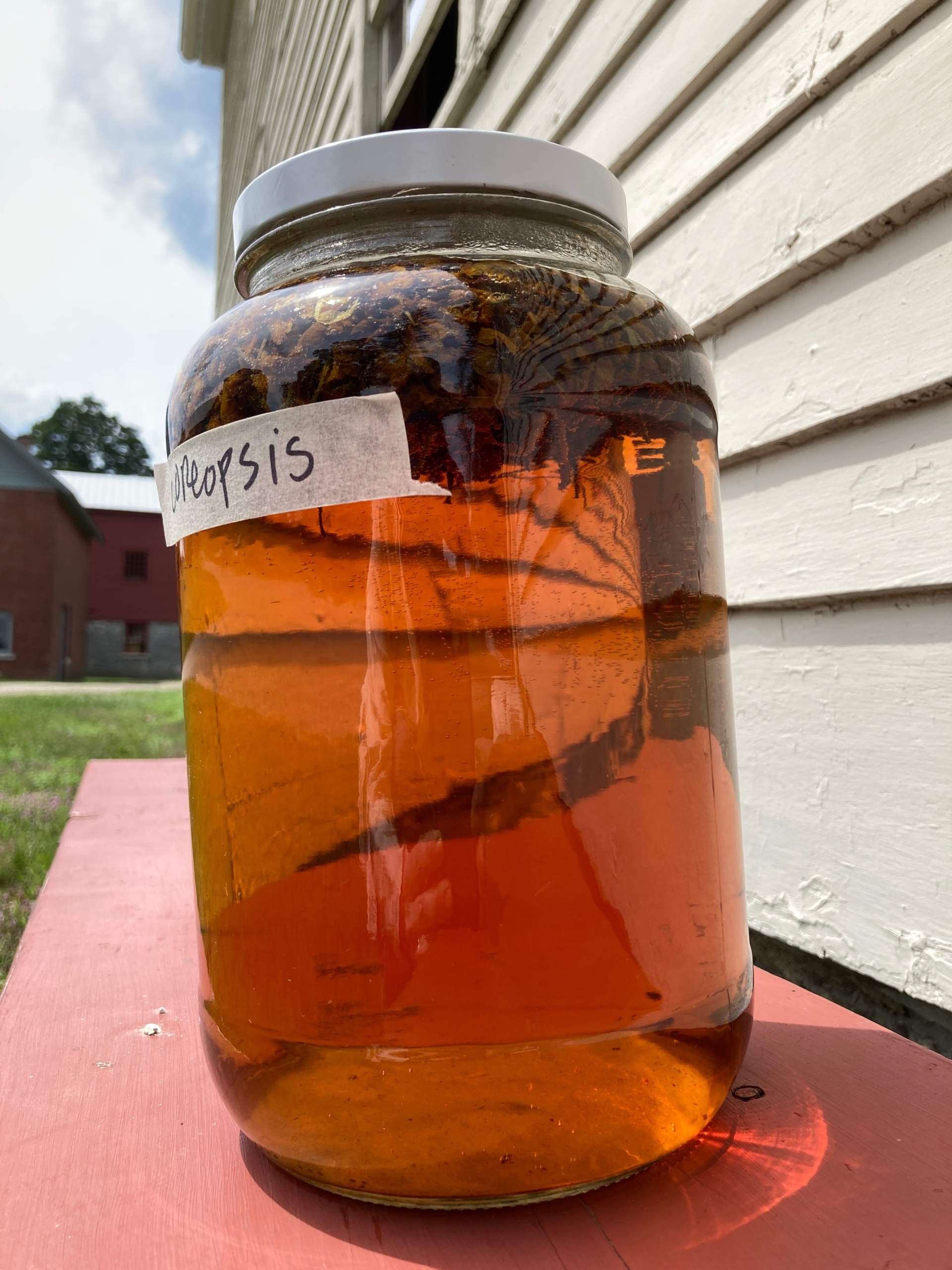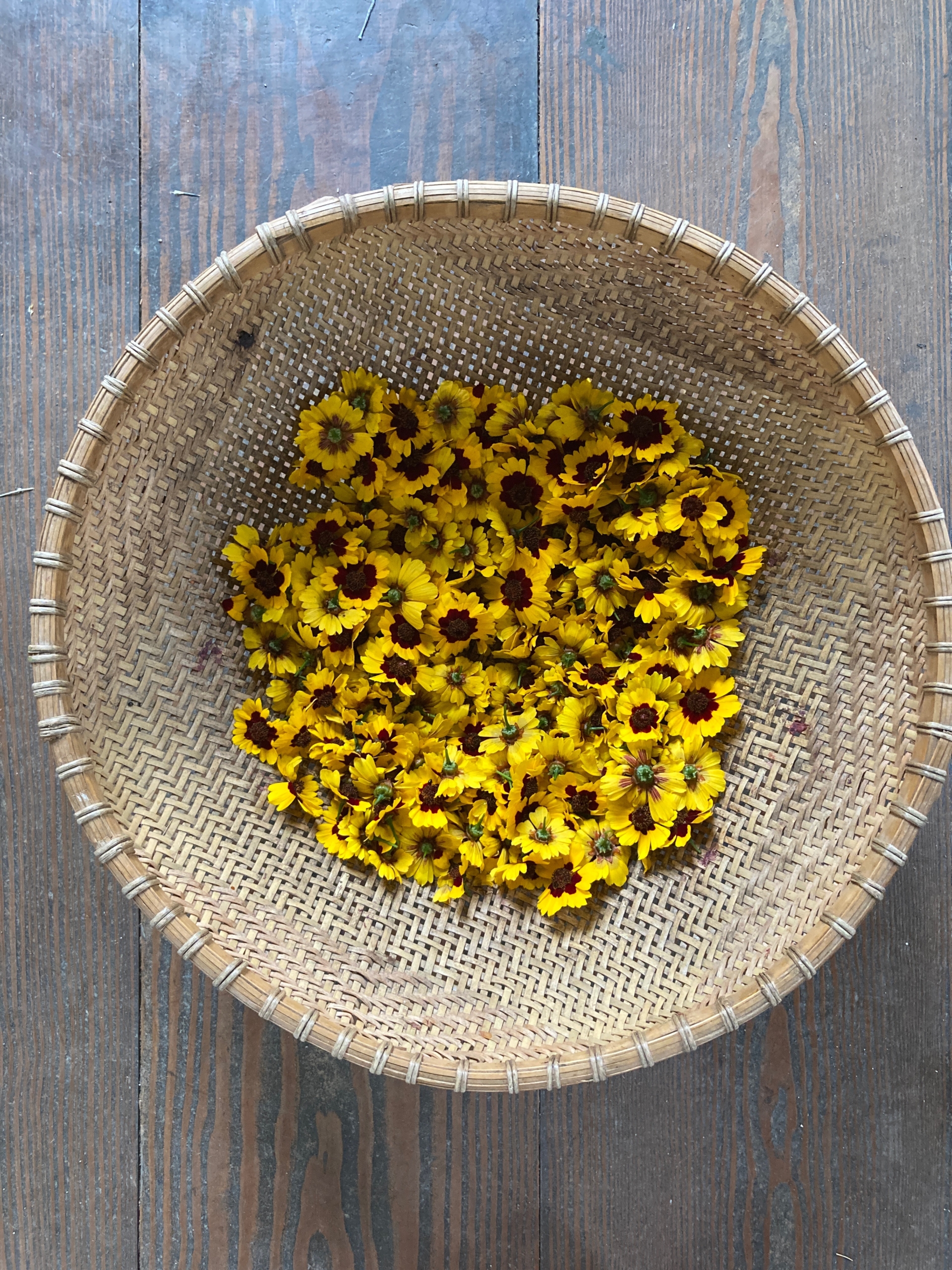wearing color
How do you pick the colors of your clothes? What if you could only wear colors that you could dye, would this limit your palatte? Or might it open up a rainbow?

Recently, I read that the Shakers were allowed to wear any color they could dye themselves, and that fact stopped me in my tracks. I imagined that the Sisters and Brethren would be clad in garments that were ‘drab’ in color and hadn’t imagined them wearing bright salmon—maybe made from a madder dye bath or pink from cochineal.

“Believers were told they might use any color they could dye themselves, and dye books indicate how broad that color range actually was. Besides the popular (and practical) blue and the butternut shades, recipes for red, black, “lead or mouse color,” salmon, pink, yellow green, drab, brown, purple, crimson, lavender, scarlet, orange, buff, blue-black and slate were given. Yellow was not used extensively, and the number of dye recipes for red shades, and, interestingly recipes for the brightest colors (orange, bright green, purple) often specified for dyeing on silk.” 1

“A variety of other dyestuffs were used during the remainder of the summer. Some were gathered or procured locally (purslain, hemlock, beech bark, sorrel, sumac), but most were purchased from chemist. A wide range of dyestuffs and chemical “assistants” is mentioned in Shaker account and receipt books. Cochineal, madder indigo, and logwood were common purchases; and alum, cream of tart, copperas, and bitrio were common setting agent, or mordant, purchases. Other dyestuffs—aleppo galls, camwood, brazilwood, fustic, annatto, redwood, catchetu, weld, and woad—were also mentioned.” (2)

At the moment, madder, woad, weld, and coreopsis are growing in the dye garden at Hancock Shaker Village and indigo in my dye garden. For cochineal, indigo, logwood, fustic, brazilwood, my source is none other than Botanical Colors. Purslain, hemlock, beech, sorrel and sumac are easily foraged. And over the next few months, I will start to make a dye book filled with all the shades of colors worn by Shakers.
Beverly Gordon, Shaker Textile Arts, (Univesity Press of New England: Hanover, NH, 1980), pg. 78, 76